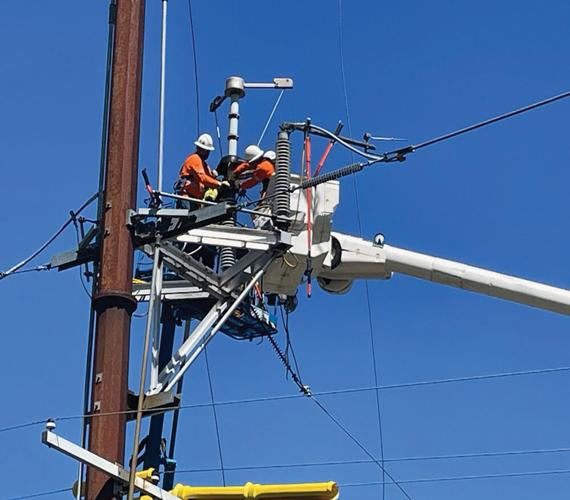By Nathan Wilson
Columbia Gorge News
THE GORGE — Pending federal approval, hundreds of currently unserved and underserved addresses near The Dalles and the upper Hood River Valley will have access to broadband internet via fiber optic cable in a few years.
Both projects are a long time coming. The Broadband Equity Access and Deployment (BEAD) initiative, a $42.5 billion federal grant program established by the 2021 Infrastructure Investment and Jobs Act, aims to ensure that every American has high-speed internet, allocating at least $100 million to each state and territory for that purpose in June 2023. Oregon received nearly $689 million, and the state broadband office revealed 19 preliminary awardees in September.
QLife Network, a broadband provider in Wasco County, is set to collect $10.4 million, and the Hood River Electric and Internet Co-op, $2.3 million. The National Telecommunications and Information Administration (NTIA) still has to sign off on the final amounts, however, and has less than three months to do so.
“Broadband is a utility, and we have to start treating it just like we treat power and water,” said QLife Executive Director Dr. Liz Lance. “The urban core of The Dalles and that of Hood River is relatively well-served, but as soon as you get out of town, there’s very little, if not nothing.”
Having broadband is essential, Lance said, because it enables people to access their work, education and healthcare. During the COVID-19 pandemic, she recalled seeing people sitting outside Starbucks or public buildings with free Wi-Fi because, despite the lockdown, that was their only option.
As is the case in rural areas across the country, large companies shy away from building out their network in the Gorge because it isn’t profitable. Isolated, far-off homes mean higher construction costs for the same return.
“In these big metropolitan areas, the density makes it attractive for especially the large privately-held or public company players to come in — the Comcasts, Spectrums, CenturyLinks,” Lance said. “They want to go into those big, dense areas because they can spend a little bit of money, do some development in a small area and get a lot of return.”
Established in 2002 through an intergovernmental agreement, QLife operates a 17-mile fiber optic network in The Dalles, primarily for important institutions like schools, hospitals and government buildings. With BEAD money, though, QLife will provide broadband to 924 new addresses, including individual homes, outside of the metropolitan area.
“This is the single largest preliminary award we’ve ever received, and it’s also the largest potential deployment that we have planned to undertake,” said Lance.
All those addresses are located within the densest portion of Northern Wasco County’s School District, and either have no internet or speeds less than 100/20 megabytes per second. The Hood River Internet and Electric Co-op plans to connect an additional 490 addresses in the upper valley, and according to the grant terms, both projects must be completed four years after the official award.
“One nice characteristic of this funding is that we can use it to build not just the mainline fiber that runs down the road, but also the service drops that go to each individual home and business,” Libby Canlon said, general manager of the co-op, over email. “This one is a little more comprehensive.”
While an overall positive development, Lance and other industry sources cautioned against BEAD’s support of satellite infrastructure, largely because fiber optic is widely considered to be the most reliable form of internet. About 46% of Oregon’s BEAD money is dedicated to satellite, and Elon Musk’s Starlink was the sole applicant awarded in that category.
In June, President Donald Trump and Secretary of Commerce Howard Lutnik altered rules governing the BEAD selection process, directing states to follow a technology-neutral approach, rather than prioritizing fiber optic, and to choose the lowest-cost provider that meets basic thresholds. If more than 6.66 households rely on Starlink in a square mile area, a recent report found that the provider may fail to deliver the minimum standard for broadband service.
“Starlink is an excellent stopgap for areas where there’s otherwise zero connectivity,” said Lance, who relies on Starlink to work from home. “But it is not the generation-long investment in broadband that BEAD is supposed to provide.”
Essentially, as Lance explained, Oregon’s Broadband Office selected Starlink in areas without compelling fiber optic applications, but, regardless of the service, all eligible addresses in Oregon will at least have an option for better internet in the near future.
























Commented
Sorry, there are no recent results for popular commented articles.